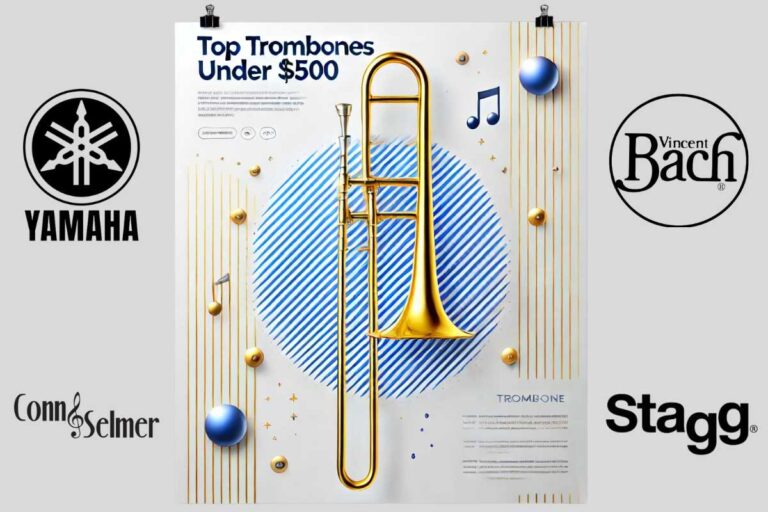10 Members of the Flute Family: List With Photo, Video, Prices
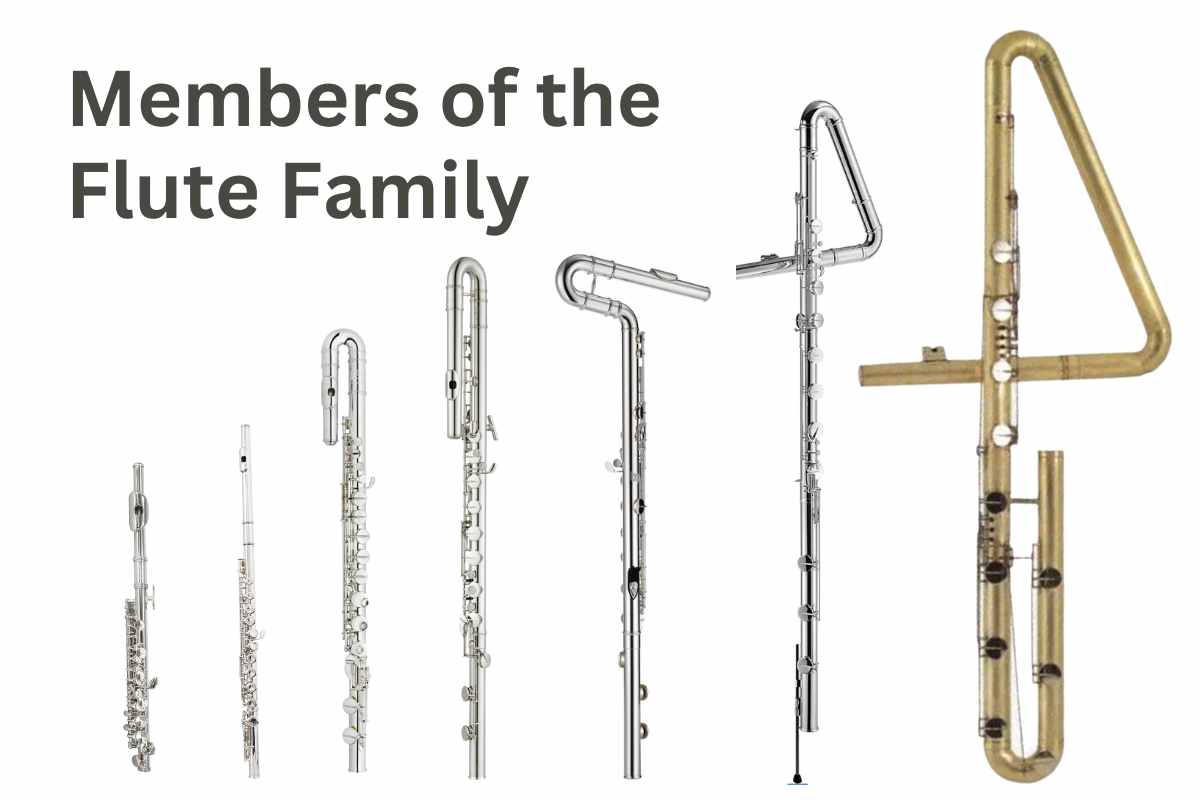
Introduce the flute family — an ensemble of woodwind instruments dating back centuries! Flutes form part of a larger wind instrument family and create beautiful music through their distinctive design. From a concert flute to bass flute, here is an introduction of all 10 members — here we include photos, videos and prices to help you better understand each type. Discover them now!
That is the Flute Family
The flute family includes several popular models with distinctive sounds and functions, each offering something special to any ensemble. Their characteristic tones add depth and warmth.
The flute is a instrument with many uses and benefits — use it to relax, make some money by performing and touch audiences deeply with its melodies.
Flute players bring an impressive variety of tones — from classical to pop and rock music, flutes offer melodious accompaniment for different genres.
The concert flute is by far the most common; piccolo also often plays an integral role in orchestras.
Alto and bass flutes are frequently featured in flute choirs; Scottish flute choirs use treble flutes more commonly.
Lower register flutes may occasionally appear in specialist ensembles or small orchestras — flute family choirs are exposed to multiple flute instruments from this family.
Flute lessons can unleash creativity, strengthen social bonds with fellow musicians and even sharpen memory — no matter your age! If playing a flute is something that brings out the passion in you — go ahead and give it your all!
Flute Family Origin
The flute evolved from the reed pipe, similar to grass whistles used by children today. Flute made out of animal bones was popular during Europe’s Paleolithic era — this style can still be found globally at archaeological sites.
Initial prototypes for modern flutes appeared in Renaissance Europe during the 16th Century!!
…Before the Baroque period, “flute” often meant vertically-held recorder pipe instruments.
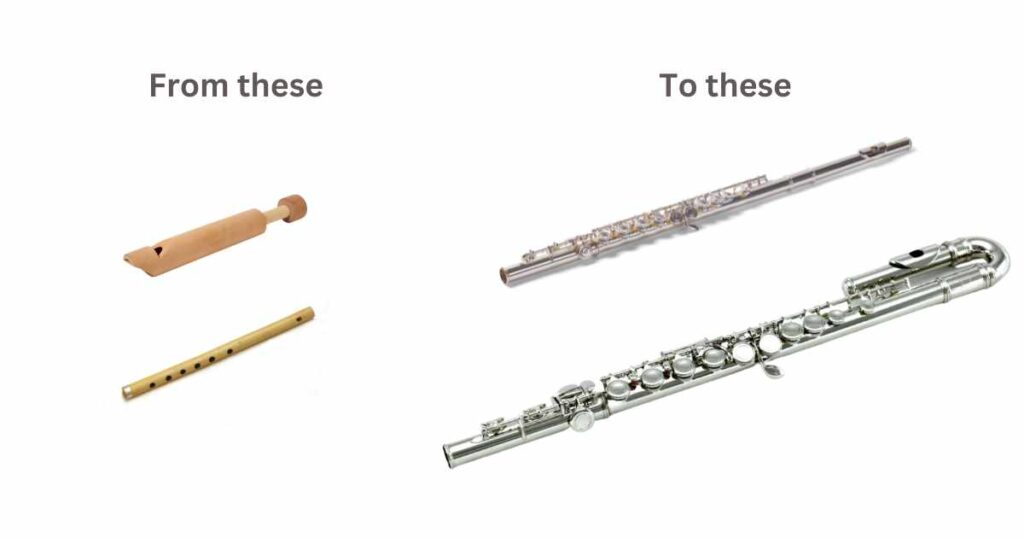
The baroque flute, an early wooden predecessor to its modern equivalent, had only two octaves of pitch range. Improvements were made — leading to its development into its modern form in late 19th-century Europe.
Early flutes were relatively straightforward instruments with cylindrical bodies, an embouchure hole and six finger holes — no fancy keys or extra features to complicate matters further.
In 1847, Theobald Boehm revolutionized the flute into what we know it today. He introduced a metal tube equipped with multiple keys for better tone quality while improving tone quality further with lip plates!!
Are you curious to gain more knowledge on different kinds of flute? Check out our post entitled The Ultimate Guide to 15 Types of Flutes: Best Images and Videos for further insights!
1 Piccolo Flute – Smallest in Flute Family
The piccolo flute (commonly referred to simply as the piccolo) — is a smaller variant of c flute, pitched an octave higher for an amplified and more vibrant tone. Constructed out of metal, plastic, or wood and measuring 12 inches long — its smaller embouchure hole, shorter body, and reduced key count set it apart from the concert flute.
Are you curious as to the inner workings of a flute? Check out our Complete Flute Anatomy Guide!
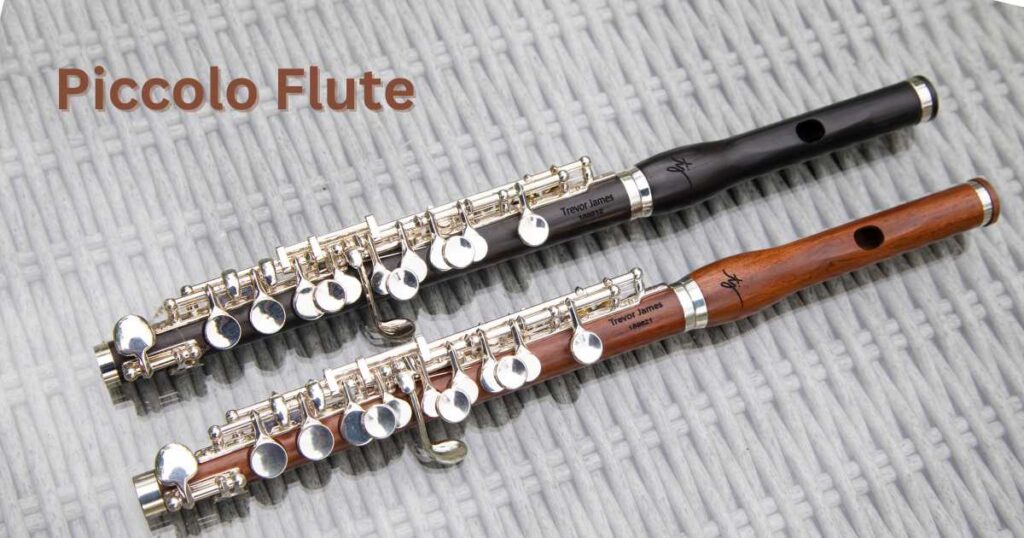
The piccolo flute has an extensive history dating back to military bands and orchestras in the 18th century; it became acclaimed by the use of famous composers as Beethoven and Berlioz in 19th-century.
Playing it is hard due to its higher octaves and the need for precise tuning despite its small size.
The piccolo is a challenge compared to c flutes (due to its small size and wide octave range). Playing this instrument requires precise control of embouchure, airstream, fingering techniques and pitch. For high notes without cracking outright — you need a “strong and flexible” embouchure.
Playing the piccolo requires more complex fingerwork than the concert flute; practice scales, do technical exercises and increase dexterity and speed of your playing style.
A piccolo performs classical pieces such as Tchaikovsky’s “Dance of the Sugar Plum Fairy”, Ravel’s “Bolero”, John Williams’ Star Wars Theme or Henry Mancini (Pink Panther Theme).
Military and marching band music relies heavily on its intense sound to add grandeur and excitement.
Pricing
Yamaha YPC-32 Student Piccolo
Giardinelli GPC-300
Pearl Flutes PFP-105
Mendini MPO-EN Black Resin
2 Concert Flute
The concert flute can trace its history back for centuries. Beginning as early flute-like instruments used by early civilizations such as Egypt and Greece, modern concert flutes emerged between 18th and early 19th centuries — with improved mechanics and playing techniques!!
A classic concert flute measures around 26 inches long and is constructed of silver, nickel or gold. This instrument consists of three components — headjoint, body and footjoint.
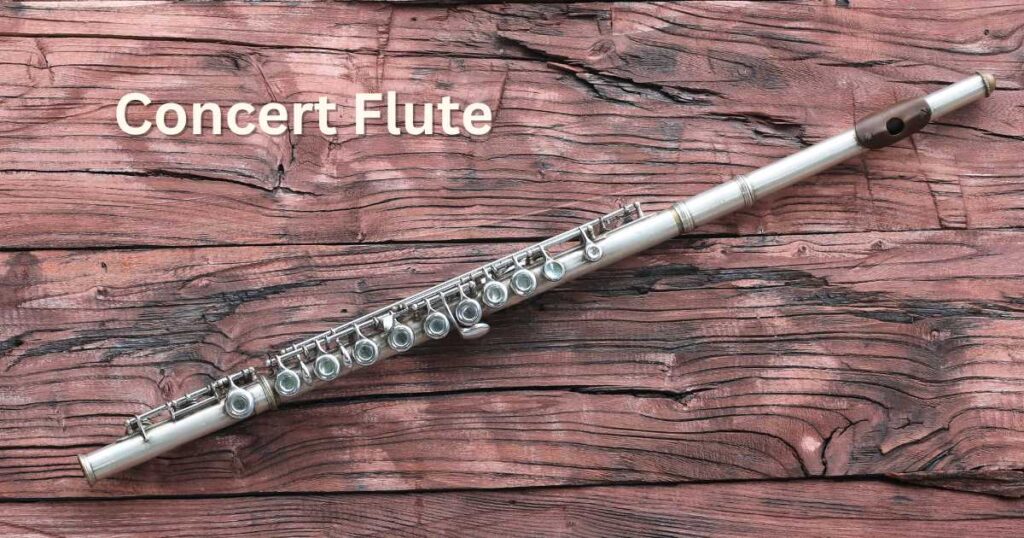
The headjoint contains the lip plate for creating sound, an embouchure hole for pitch adjustment and a tuning cork for fine-tuning the pitch. The body has keys, tone holes and rods for pitch change when playing different notes. The footjoint features its own key system for the lowest flute notes.
To play different notes and scales, a player needs different fingering (including alternates), breath techniques and to control the dynamics and tonality of notes.
Flute players commonly employ techniques like vibrato (pitch wavering), articulation (crisp note starting and stopping) and trills (rapid alternations between two notes).
C flute players boast one impressive feature — its range can extend three octaves from low C all the way up to above the C above the treble clef! That is truly impressive.
To achieve its distinct sound, c flute players blow across the edge of an opening (embouchure hole) in its headjoint to generate vibrating air columns in its tube.
Mozart’s Flute Concerto in D is widely revered, while notable flute players include James Galway (popularized the flute) and Jean-Pierre Rampal (unique playing style).
Pricing
Etude EFL-200 Student Series Flute
Yamaha YFL-222 Student flute
Prelude by Selmer 111 Student Flute
Yamaha YFL-362 Intermediate Flute
Read up on some of the Best Beginner Flute 2023 Student Picks and Brands for useful and in-depth info — all kinds of beginner flutes for sale today.
3 Treble flute of Woodwind Family
The Treble Flute (Pitch G / Transposing A Fifth Higher) is an unusual member of the flute family that may only ever be found occasionally within flute choirs, marching bands or private collections.
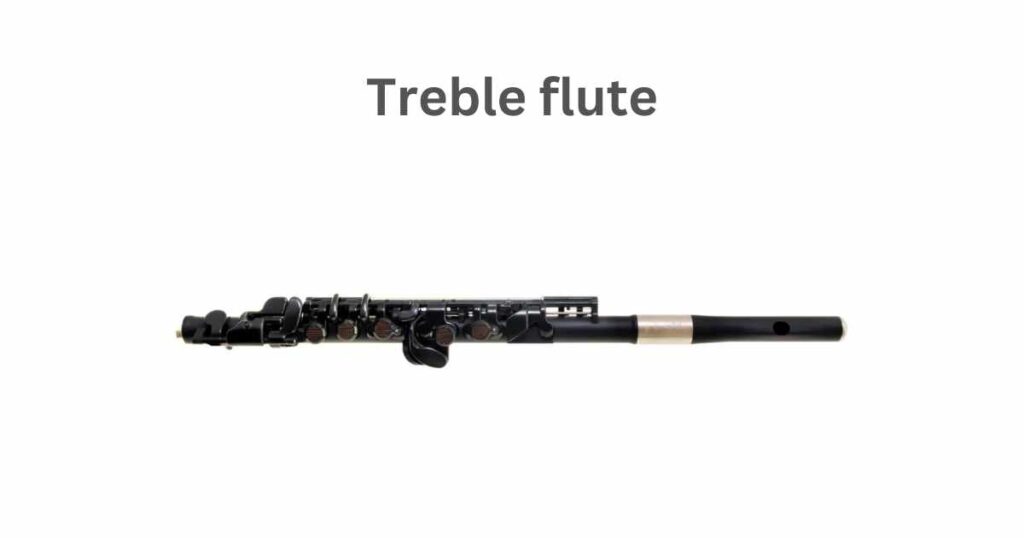
Similar in range to a piccolo flute — the treble flute stands out with its distinct upper register sound quality and extended lower register range. Not to be mistaken with a larger alto flute in G (one fourth below c flute).
Its usage has faded since Renaissance flute consorts; some flute bands in Northern Ireland and Scotland still use G treble flutes.
Treble flutes are relatively scarce instruments and thus limited repertoire compared to its more common instrument of the flute family. Learning to play is difficult for beginners due to difficult-to-locate specialized instructors.
Pricing
Grenaditte Treble Flute
Guo New Voice Treble Flute
4 Soprano flute
Although relatively rare instruments, Soprano flutes feature in some American flute choir publications. Tuned to E flat, it has a 12 to 15 inch long body, a smaller embouchure hole and the lowest note of Eb above middle C on the treble clef.

Soprano flute tunings correspond with concert pitch (a transposing instrument), meaning C on your flute will sound just like C on the piano. It ranges from B3 up to C7 approximately.
A soprano flute is longer than its smaller cousin the piccolo but shorter than the standard concert flute.
Due to its high pitch, proper intonation and tuning are vital for professional flutists. Professional flutists tend to favor piccolo flutes due to their bright sound — distinguishing them from soprano flutes.
The soprano flute is not as popular as its more well-known cousin — the piccolo – but its unique sound makes it worthy of exploration.
Pricing
Kotato Soprano Flute
5 Alto Flute
The alto flute is another sibling of the flute family — It has warm tones in its lower range (because of its larger body thickness). It uses similar fingering patterns as C flute and piccolo. The alto flute is tuned in G — one fourth lower than the C flute tuning.
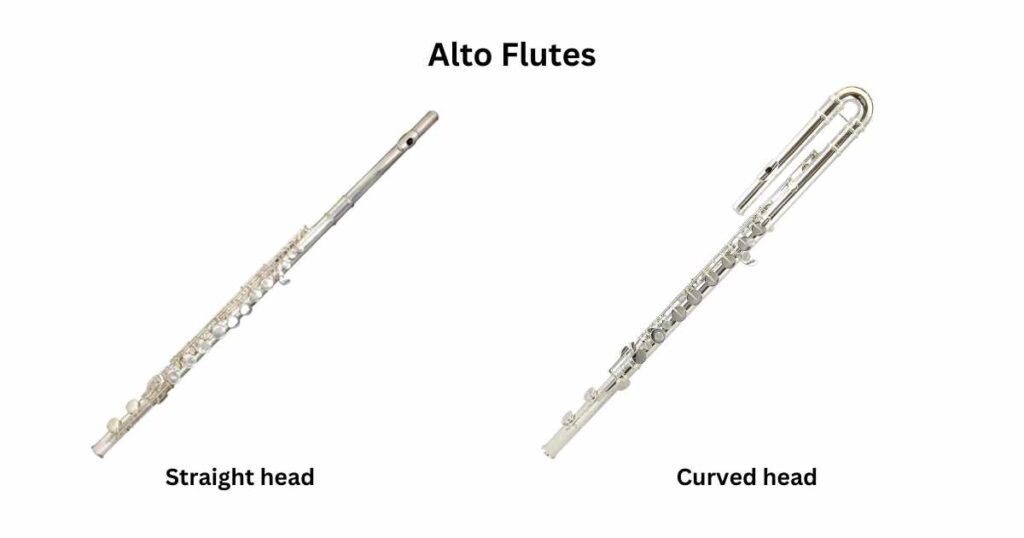
The alto flute can feature a curved headjoint for extended playing sessions. Due to its larger size and weight — it requires greater breath control for beginners.
Since it is larger and heavier than a C flute, you need to adopt posture and hand positioning to play it. Alto flute maintenance requires longer cleaning rods and larger pads to care for it properly.
The alto flute has inspired composers, leading to amazing pieces like Debussy’s famous “Syrinx.” Robert Muczynski, Toru Takemitsu and Gary Schocker have recognized alto flutes beauty. Some movies that use its sound include: ‘The Shape of Water,” Lord of the Rings” and Guardians of the Galaxy”.
Ready to dive right in? Join our post on Learning How to Play the Flute with 8 Helpful Tips.
Pricing
Jupiter JAF1100E Performance Alto Flute
Pearl Flutes 207 Series Alto Flute
Yamaha YFL-A421 Professional Alto Flute
6 Bass flute
The bass flute is one of the larger members of the flute family! It measures 50-60 inches in length and 1 inch larger in diameter than the c flute!!
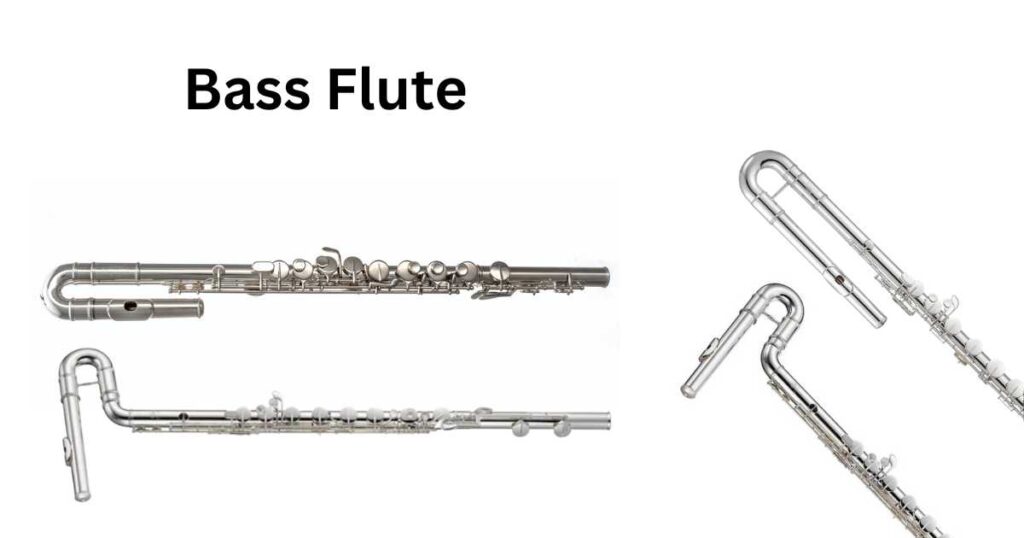
Bass flute parts are rare in large works — typically used only by flute ensembles or specific commercial orchestrations.
Bass flute is usually played in C (one octave below C flute) with C below middle C being its lowest note.
Its range is more expansive (C3 to C5), going lower than typically associated with flute playing.
It has a curved (U-bend) headjoint to bring its embouchure hole closer to finger holes. Bass flutes are the lowest flutes playable without support.
Robert Dick, an internationally-recognized bass flute player, revolutionized techniques using both bass and alto flute.
Though not often heard in orchestral literature, bass flutes have grown increasingly popular as part of chamber music ensembles. Good examples are — Jean-Pierre Rampal of Bolling’s Suite for Flute (including bass flute) and Jazz Piano Trio by Bolling.
Pricing
Yamaha YFL-B441II Professional Bass Flute
Jupiter JBF1000 Bass Flute
Pearl Flutes 305 Series Bass Flute
7 Contrabass Flute
Pitching itself two octaves lower, this flute (Range — C2-C4) plays two octaves lower than the concert flute, measures over seven feet long and plays sitting up!!
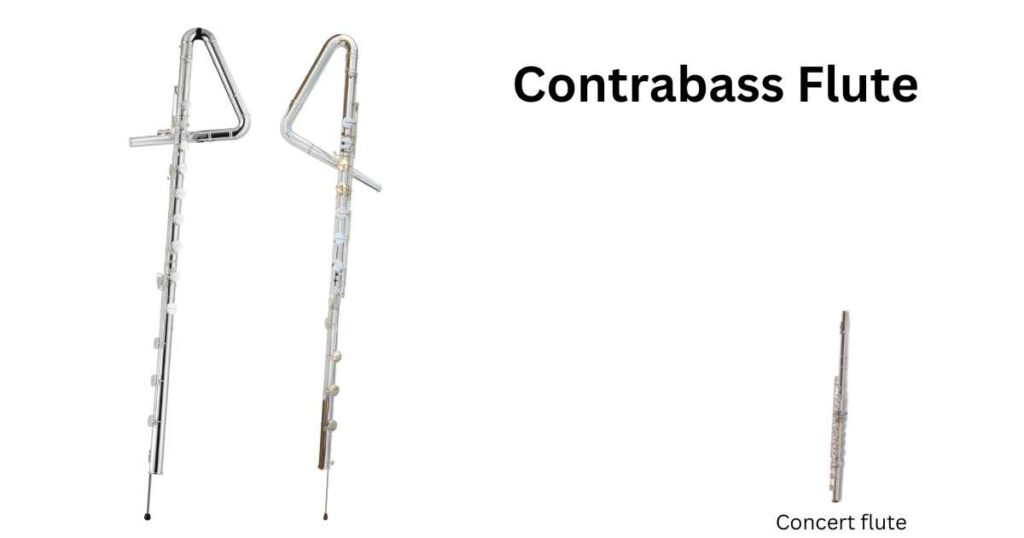
…Due to this reason, the tubing has been designed in the shape of a 4, allowing you to play it standing up vertically with a curved (U shaped) head joint for playing easier.
Contrabass flutes can be challenging to play for long stretches due to their size, weight and unique fingering system. It requires good breath support due to its lower register.
Flutes can be quite pricey — not everyone can afford one.
Contrabass flute is less common but popular within flute choirs and ensembles. Contemporary musicians are discovering its many distinctive sounds and textures for use within contemporary composition.
Pricing
Pearl Contrabass Flute Model 905
Meraki Contrabass Flute
Kingma Contrabass Flute #9621
8 Subcontrabass flute
The subcontrabass flute is an exotic musical instrument that has won the hearts of music enthusiasts around the globe.
The subcontrabass flute is a large instrument from the Western concert flute family. It’s typically used by flute ensembles — often custom made by specialty makers.
This instrument bridges the gap between Contrabass and Double Contrabass.
This instrument comes in either G or F key and metal plating or polyvinyl construction — with metal being much heavier at around 30 kg…
…Plastic instruments are lightweight, portable instruments that make playing easy.
Subcontrabass foot joint features adjustable support posts similar to that found on contrabasses for extra support.
9 Double Contrabass Flute – Octobass of Flute Family
The Double Contrabass (Octobass) flute is an impressive C-pitched with its lowest note lying three octaves below the middle C.
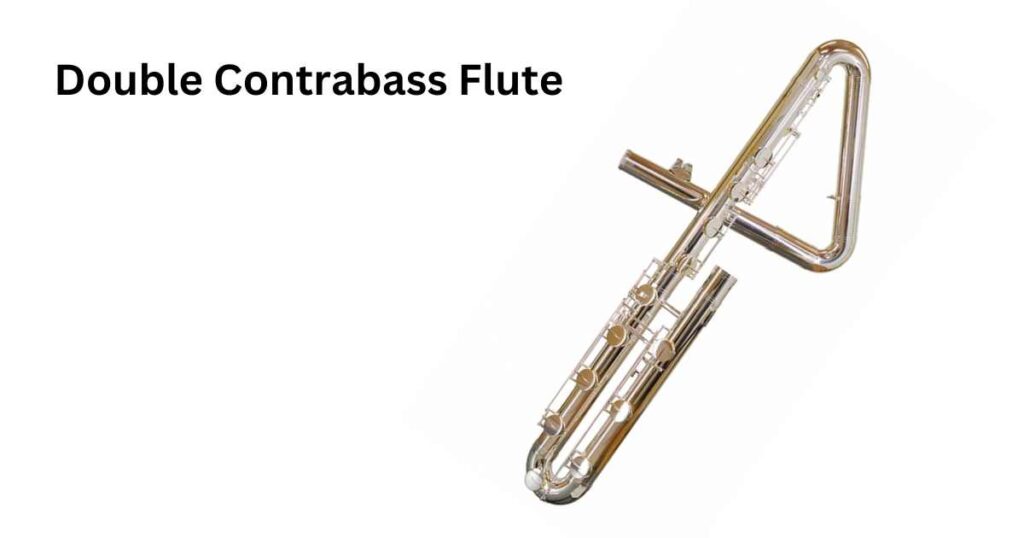
The double contrabass flute stands over 8 feet tall and features 18 feet (5.5 meters) of tubing, creating an exquisite instrument.
A double contrabass flute cannot be adjusted for height adjustment.
Discovering this instrument began after listening to a recording by Piacere, a Japanese flute ensemble.
Different models are available at various price ranges, like the Kotato Double Contrabass flutes — one of them being among the more costly offerings!
Pricing
Kotato Double Contrabass Flute in C
10 Hyperbass flute – The Lowest in Flute Family
The hyperbass flute is the largest and lowest-pitched instrument within the flute family.
Tuned to key of C, four octaves below the concert flute (and one below the Double Contrabass flute…). The lowest note falls an octave below the lowest C on the piano keyboard!!
To play this amazing flute — blow air through 26 feet (8 meters)!! Sound reaches 16 Hertz — humans typically hear frequencies below 20 Hertz!!
Francesco Romei created the inaugural hyperbass flute playable instrument in 2008 for Roberto Fabbriciani of “Flute Quartet No.1”. Peter Sheridan then ordered his fully chromatic hyperbass flute from Francesco in 2010.
While many manufacturers produce concert, alto and bass flutes, only a few specialize in hyperbass flutes — notable brands like Yamaha and Pearl DO NOT produce such low note flutes.
Hyperbass flute is an uncommon instrument with a limited repertoire. Allesandro Grego composed “Persistenza della Memoria,” an original work featuring electronics and magnetic tape combined with low flute.
Conclusion
The flute family is immensely popular and versatile — whether you are just learning or an experienced musician.
There will surely be the ideal flute to suit all musical requirements — from concert and alto flute to bass and contrabass flute (and many other instruments) — every member offers something different! In this article, we aim to give an understanding of the flute family including prices pictures and videos for an easy decision-making process!
With such a wide variety of options, you can find the instrument suitable to meet all your musical requirements!






